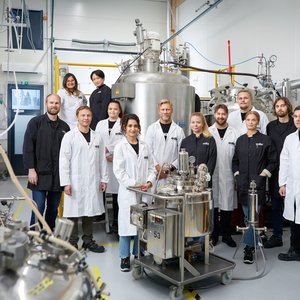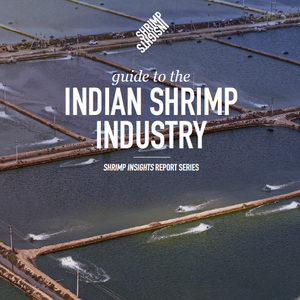What happens inside salmon when it is affected by oxidative stress and the seasons? Norwegian researchers from the Insitute of Marine Research carried out three experiments with post-smolt salmon showing that increased growth as a result of increased day length and temperature in spring affects both the oxidation status and the metabolism of salmon. This causes C and E vitamins to be consumed. These vitamins help protect the fish against oxidative stress.
When food is eaten by fish, metabolism uses oxygen to provide energy for the body. In this process, small amounts of electrons leak out. These then settle on the oxygen, and free oxygen radicals are produced. If there are too many of these radicals, oxidative stress occurs. This stress is an imbalance in the system that can damage cells.
The body's weapon against oxidative stress is antioxidants, and many of them are found naturally in the body. In metabolism, many enzymes have on-off switches that are regulated by oxygen radicals and oxidation states. By turning these switches on and off, various pathways in the metabolism are controlled by free radicals created in combustion.
But what is it that turns the switch on and off, so that the cells are told to change their metabolism? This is exactly what the researchers have tried to find out.
The spring drop is a good example of how fish are affected by oxidative stress. “In the spring, there is a period when the fish lose their color. This is because oxidative stress has hammered the antioxidants so hard, that it has lost the substance astaxanthin, which is also an antioxidant, and which gives the fillet its characteristic red color,” explained Kristin Hamre, researcher at the Norwegian Institute of Marine Research.
Researchers have also seen a clear connection between the growth periods and the impact of stress by creating an artificial spring for fish. The length of the days in particular has a great influence on the fish's oxidative status.
“When the temperatures rise and the days get longer, fish increase their growth, and this triggers a stress reaction in their bodies. This reaction means that the oxidative stress level can increase up to 1,000 times,” said Hamre.
For fish living in the wild, this process occurs naturally from March until the sun turns at the end of June. The levels return to normal in the autumn.
In autumn, fish stop growing and the oxidative stress in the salmon's body is also reduced. “Gradually, we see that C and E vitamin levels as well as stress levels return to normal,” said Hamre.
The findings show in particular that farmed salmon need specific vitamin levels in the spring than in other parts of the year because the growth itself is a stress factor for the fish.
References:
Yin P, Björnsson BT, Fjelldal PG, Saito T, Remø SC, Edvardsen RB, Hansen T, Sharma S, Olsen RE, Hamre K. Impact of Antioxidant Feed and Growth Manipulation on the Redox Regulation of Atlantic Salmon Smolts. Antioxidants. 2022; 11(9):1708. https://doi.org/10.3390/antiox11091708
Yin P, Saito T, Fjelldal PG, Björnsson BT, Remø SC, Hansen TJ, Sharma S, Olsen RE, Hamre K. Seasonal Changes in Photoperiod: Effects on Growth and Redox Signaling Patterns in Atlantic Salmon Postsmolts. Antioxidants. 2023; 12(8):1546. https://doi.org/10.3390/antiox12081546
Peng Yin, Takaya Saito, Per Gunnar Fjelldal, Björn Thrandur Björnsson, Sofie Charlotte Remø, Sandeep Sharma, Rolf Erik Olsen, Kristin Hamre (2024) Environmentally driven changes in Atlantic salmon oxidative status interact with physiological performance. Aquaculture, Volume 581, 2024, 740400. https://doi.org/10.1016/j.aquaculture.2023.740400













